Teddy Bear Hamster: Diet, Types and Facts
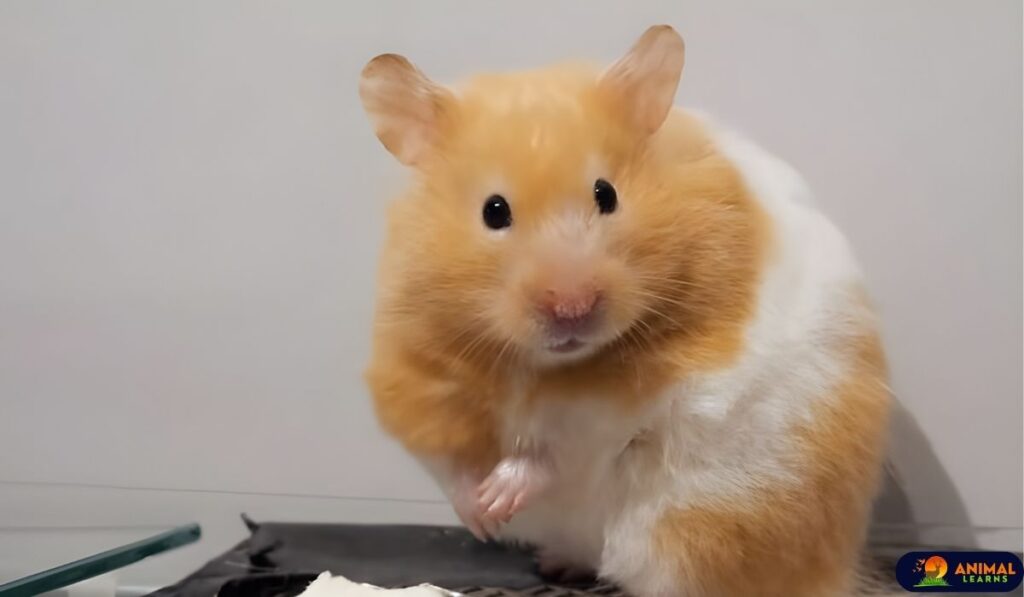
Who can resist a cute teddy bear hamster? If you’re after an adorable furry companion, the teddy-bear hamster is a perfect choice.
These adorable creatures are actually Syrian hamsters, a type of herbivorous rodent that enjoys munching on grains, veggies, and fruits. They have very short tails, only about half an inch long, and they can live for 2 to 3 years with proper care.
Some people call them teddy bear-hamsters because of their long and fluffy fur, while others use the name for any Syrian hamster because of their cute and round shape. But no matter what you call them, these hamsters are sure to melt your heart with their sweet and friendly personality.
They are easy to take care of and great for responsible kids who want a pet. If you’re looking for a lovable and low-maintenance companion, a teddy bear-hamster might be the perfect choice for you.
Teddy Bear Hamster Basics
Contents
- 1 Teddy Bear Hamster Basics
- 2 Appearance
- 3 Essential Care Tips
- 4 Friendliness, Behavior, and Characteristics
- 5 Diet and Feeding
- 6 Teddy Bear Hamster Food Preferences
- 7 Dietary Requirements and Recommendations
- 8 Teddy Bear Hamster Health
- 9 Common Diseases and Illnesses
- 10 Types
- 11 Health Concerns and Common Diseases
- 12 Hibernation and Seasonal Changes
- 13 Reproduction and Family Life
- 14 Fun Facts
- 15 Teddy Bear Hamsters in the Wild
- 16 Conclusion
- 17 FAQs
Theyalso known as long-haired Syrian hamsters, are captivating creatures that capture the hearts of pet enthusiasts worldwide. Understanding their lifespan is the first step to forming a long-lasting bond. These endearing hamsters typically live for 2 to 3 years, providing years of companionship.
Their size sets them apart from their dwarf counterparts, with teddy bear-hamsters being more substantial and sturdier, making them an ideal choice for those seeking a hamster with a bit more to love. When it comes to care, they are known for their friendly disposition.
They are among the most friendly of hamster species, making them a perfect choice for families and individuals alike. Proper feeding is essential for their well-being, as they enjoy a varied diet consisting of pellets, fresh fruits, and vegetables.
| Topic | Lifespan | Size |
| Average Lifespan | 2-3 years | 5-7 inches (12.7-17.8 cm) |
| Maximum Lifespan | Up to 4 years | Varies depending on genetics |
| Factors Affecting Lifespan | Diet, habitat, genetics | N/A |
| Size Comparison | Relatively small | Small, compact body |
| Growth Rate | Fully grown in a few months | Rapid growth as juveniles |
| Sexual Dimorphism | Minimal size difference | Minimal size difference |
Appearance
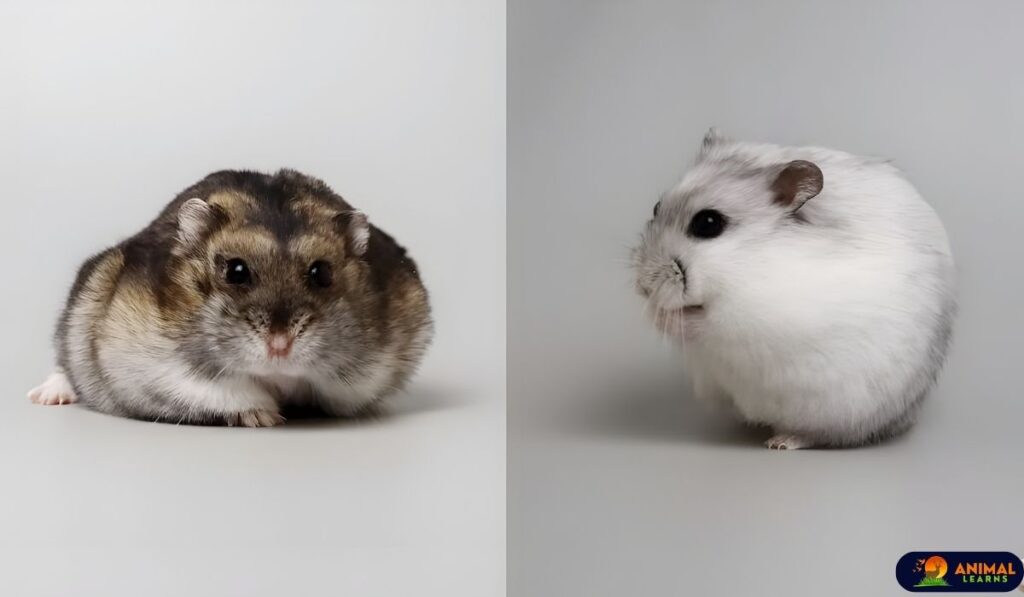
If you love hamsters, you’ll be amazed by the different colors of fur that Teddy Bears can have. These hamsters are so cute and unique, and each one has its own personality. You can find Teddy Bears in many colors, such as yellow hamster, white, black, brown, and gray.
Some of them are even albino, which means they have red eyes. Others have curly or wavy fur, which makes them look extra adorable. You can choose a hamster that suits your style and taste. They are a wonderful way to enjoy the beauty and diversity of hamster fur.
Essential Care Tips
Appropriate Habitat: Your teddy bear needs a big cage with good airflow. Wire cages or glass tanks are good options. Make sure the bars are close together so your hamster can’t escape.
Bedding: Use soft and safe bedding like aspen shavings, paper bedding, or shredded paper. Don’t use cedar or pine shavings, as they can hurt your hamster’s breathing.
Nutritious Diet: Your teddy-bear hamster eats mostly hamster pellets, fresh veggies (like carrots, cucumbers, and greens), and some fruit. Give your hamster fresh water every day.
Social Interaction: Your bear hamster likes to be alone, but it also likes to be with you. Talk to and touch your hamster gently every day to make friends and keep it happy.
Exercise and Toys: Your hamster needs to move and play. Give it an exercise wheel, tunnels, and chew toys to have fun and stay healthy. The wheel should be solid and not have gaps to avoid injuries.
Regular Cleaning: Keep your hamster’s cage clean. Throw away dirty bedding, old food, and poop every day, and clean the whole cage once a week.
Temperature and Lighting: Put your hamster’s cage in a quiet, warm place with no drafts. The temperature should be between 65-75°F (18-24°C). Don’t put it in the sun, as it can get too hot.
Grooming: Your bear hamster has long fur that can get messy. Brush its fur gently with a soft brush to keep it smooth and comfortable.
Health Monitoring: Watch your hamster’s health. Look for signs of sickness, such as being tired, eating less, or having runny eyes or nose. If you see anything wrong, take your hamster to a vet who knows about small animals.
Respect Their Nocturnal Nature: Your teddy bear is awake at night and sleeps during the day. Be careful when you handle and play with your pet, and let it rest when it needs to.
Friendliness, Behavior, and Characteristics
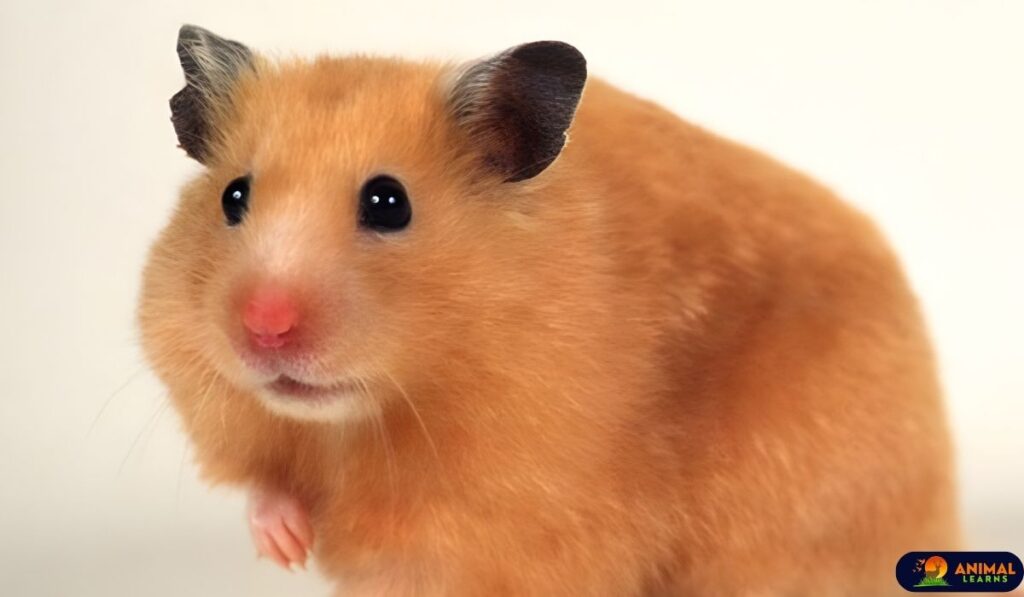
Friendliness
They are very friendly and make great pets for everyone. They are calm and gentle and don’t bite or get angry easily. But some hamsters may be more or less friendly than others. To make your hamster happy, you need to play with it often and be nice to it. Always be careful and slow when you touch your hamster. This way, you and your hamster can be good friends.
Behavior Patterns and Characteristics
- Theys are awake at night and sleep during the day.
- They like to dig and make tunnels and nests in their cage.
- They clean themselves often to keep their fur nice and soft.
- They store extra food in different places in their cage.
- They are usually alone, but they can be friends with another hamster if they meet when they are young.
- They are curious and like to play with toys and explore new things.
- They need to chew on things to keep their teeth healthy. Give them safe chew toys.
- They make nests for sleeping and use bedding to make them cozy.
- They can be protective of their space, so don’t put too many hamsters together.
Diet and Feeding

Teddy Bear Hamster Food Preferences
Your Bear eats mostly grains, veggies, and fruits. They like grains like oats, barley, and wheat. They also like fresh veggies like carrots, broccoli, and cucumber. You can give them fruits like apples, pears, and bananas sometimes as treats. Make sure they eat different kinds of foods to stay healthy and not get too fat.
Dietary Requirements and Recommendations
Your Teddy Bear-Hamster needs some special foods to be healthy and live long. Besides grains, veggies, and fruits, you should also give them hamster pellets every day.
These have vitamins and minerals that they need. They also need fresh water all the time. Don’t give them too much sugar or fat, as they can get sick or overweight.
Also, don’t give them more food than they can eat, as they might store it and eat too much later. Check their weight regularly and give them a balanced diet. This will make your Syrian hamsters happy and healthy.
Teddy Bear Hamster Health

Common Diseases and Illnesses
Your Teddy-Bear Hamster can get sick sometimes. Some common sicknesses are breathing problems, teeth problems, and diarrhea. They can also get skin problems like mites or fungus. One of the most serious sicknesses is wet tail, which is a very bad diarrhea that can kill your hamster if not treated quickly.
Another common problem is being too fat, which can happen if your hamster eats too much or doesn’t exercise enough. You need to check your hamster’s health often and watch for any changes in how they act.
How to Identify and Treat These Health Issues
To find out if your Teddy Hamster is sick, look for changes in how they act, such as being tired, not eating, or having runny eyes or nose. For breathing problems, listen for sneezing, wheezing, or hard breathing.
For teeth problems, look for drooling or trouble eating. If you see any of these signs, take your hamster to a vet who knows about small animals.
They can give your hamster the right medicine or treatment to make them better. Make sure your hamster has a clean and calm cage, a healthy diet, and good grooming to prevent sicknesses.
Also, take your hamster to the vet regularly and keep their cage clean. This will help your teddy bear hamster stay healthy and happy.
Types
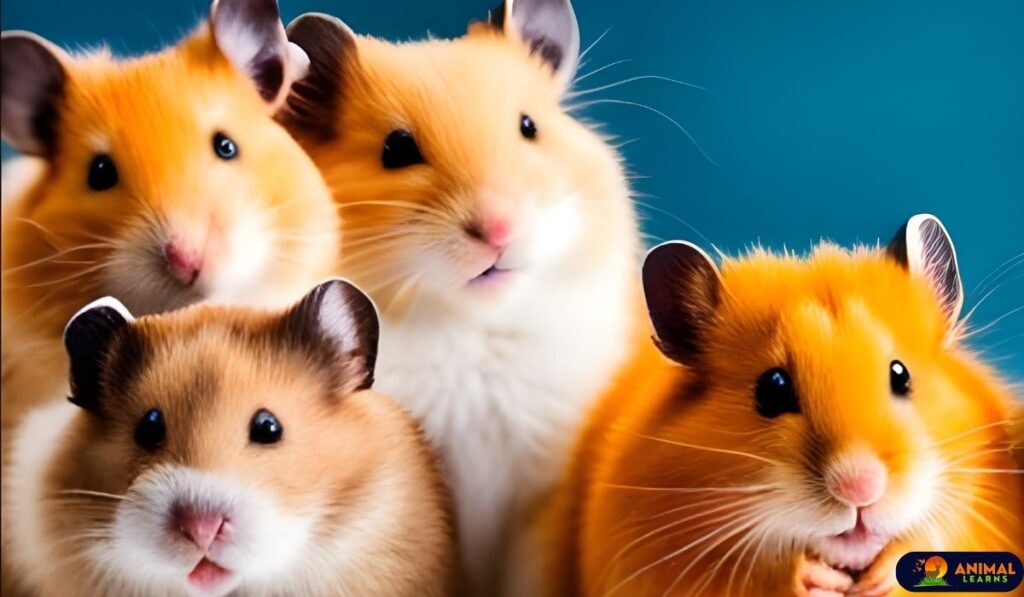
Teddy Bear Hamsters vs. Syrian Hamsters
They are a type of Syrian hamster. They have long, fluffy fur that makes them look like teddy bears. Syrian hamsters are bigger than other hamsters and need the same care, such as good food, clean cages, and exercise. These bears and Syrian hamsters like to be alone and don’t get along with other hamsters.
Comparing Teddy Bear Hamsters with Dwarf Hamsters
Dwarf hamsters are different from Teddy Bear Hamsters in many ways. They are much smaller and can live with other dwarf hamsters if they meet when they are young. They are very fast and energetic, while they are more slow and calm. You need to know these differences to choose the best hamster for you.
Exploring the World of Fancy Bear Hamsters
Fancy Bear Hamsters are a kind of Teddy Bear Hamster that have different colors and patterns on their fur. They can be white, black, brown, gray, orange, or albino, and some have red eyes. They are very beautiful and eye-catching.
To take care of a Fancy Bear Hamster, you need to keep their cage clean and big and give them healthy food to make their fur shiny and bright. These hamsters are great pets for people who love their looks and want an easy companion.
Understanding the Differences: Syrian vs. Dwarf vs. Fancy
To truly appreciate these charming creatures, it’s crucial to recognize the differences between teddy bear hamsters and other hamster species.
While they are known for their friendly nature, other species, such as dwarfs and fancy hamsters, may exhibit distinct characteristics and behaviors
Being aware of potential diseases and illnesses, such as eye infections or allergies, is essential for timely treatment to ensure their well-being. These hamsters might also go through hibernation periods, so understanding this behavior is vital.
Their luscious long hair is one of their distinguishing features, but it requires regular grooming to prevent tangling and matting.
Providing the right habitat, complete with suitable bedding and toys, is essential for their physical and mental health. With a spectrum of coat colors, including albino, black, brown, gray, orange, and white, and some boasting rare rex fur, there’s a teddy bear hamster to match everyone’s preferences.
For those interested in breeding, knowing the gestation period and how to care for baby hamsters is crucial. Additionally, understanding their gender is essential when considering housing them together. They bring an abundance of fun with their playful behavior and charming noises, adding joy to the lives of their owners.
Finally, while they make delightful pets, observing them in the wild reveals their natural instincts and behaviors that have made them beloved in the world of small mammals.
Health Concerns and Common Diseases

These animal’s health is important, and you need to watch out for any signs of sickness. Some common problems are breathing problems, which can make your hamster sneeze or wheeze, and teeth problems, which can happen if their teeth grow too long.
If you see any of these signs, or if your hamster acts differently, is less active, or seems unhappy, you should take them to a vet who knows how to treat small animals.
Sometimes, your hamster might also have allergies, which can be caused by their bedding, food, or something in the air. To prevent allergies, keep your hamster’s cage clean and avoid anything that might bother them.
If your hamster still has allergies, talk to your vet about what to do. By taking good care of your hamster and visiting the vet regularly, you can keep your Teddy Bear Hamster healthy and happy.
Hibernation and Seasonal Changes

Your Teddy Bear Hamster may sometimes go into hibernation, which is when they sleep very deeply and slow down their body functions. This is normal for some hamsters, but it can also look like they are sick or tired.
You need to know how to take care of your hamster when they hibernate, so they can stay healthy and happy. Hibernation depends on the temperature of your hamster’s room.
To prevent or stop hibernation, keep the room warm, between 65-75°F (18-24°C), and give your hamster enough bedding and nesting materials to keep them cozy.
Never wake up a hibernating hamster, as this can stress them out. Just watch them from a distance and make sure they have fresh food and water when they wake up.
If your hamster hibernates for too long or you think they have a problem, take them to a vet who knows about small animals. By understanding hibernation, you can help your Teddy Bear Hamster live a long and comfortable life.
Reproduction and Family Life
Do you want to see your Teddy Bear Hamster have babies? It can be a wonderful and exciting experience, but you need to be careful and prepared. To breed these hamsters, you need to find a male and a female hamster that are healthy and compatible.
The female will be pregnant for about 16 days, and then she will have a bunch of babies, usually 4 to 12, but sometimes more.
You need to give the mother a cozy and quiet place to have her babies, as she can get stressed easily. The babies will be very small and bald when they are born, and they will need their mother’s milk and warmth for the first few weeks. You should not touch the babies or the nest too much, as this can upset the mother.
Only handle the babies gently when you need to check on them or clean the cage. Breeding and taking care of baby hamsters is a big responsibility, so make sure you know what you are doing and enjoy the process of watching the new hamsters grow.
Fun Facts
- They are a type of Syrian hamster with long and fluffy fur.
- They are very gentle and calm, and they are perfect for beginners who want a pet hamster.
- They are small but they can live for 2 to 3 years, which is longer than most hamsters.
- They eat mostly grains, veggies, and fruits, and they need a balanced diet to stay healthy.
- They like to be alone and they don’t get along with other hamsters, so they need their own cage.
- They make some noises to talk or show how they feel.
Teddy Bear Hamsters in the Wild
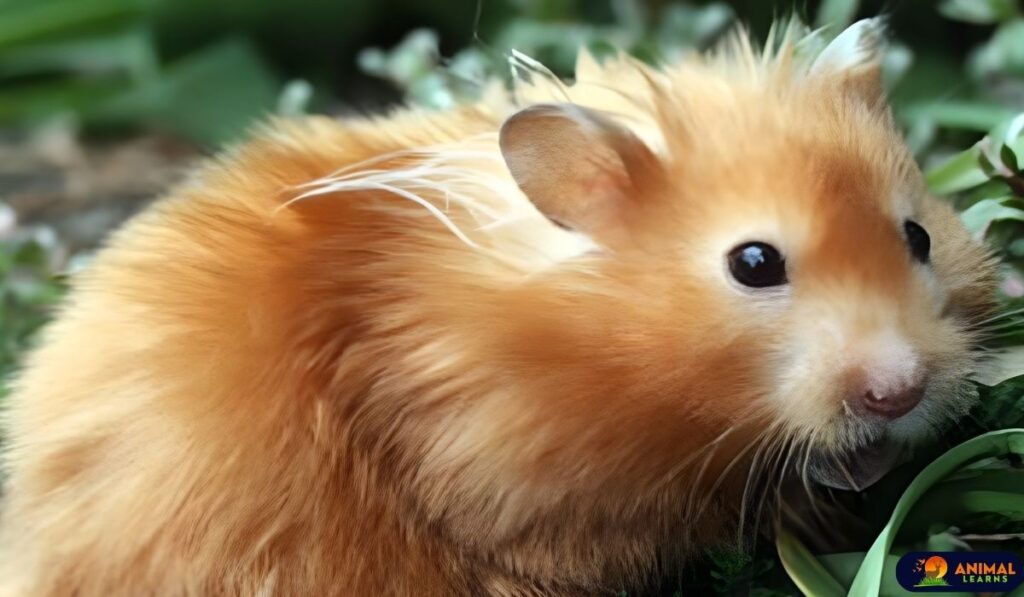
Did you know that your Teddy Bear Hamster comes from a wild ancestor that lives in Syria? These wild hamsters live in dry places and dig underground tunnels to hide and store food.
They also sleep during the day and wake up at night to avoid the hot sun. Your pet hamster is different from the wild ones in many ways.
They have learned to adjust to your schedule and be active when you are. They also don’t have to look for food, as you give them everything they need. By knowing these differences, you can take better care of your hamsters and make them happy and healthy.
Conclusion
They are very cute and fluffy hamsters that make great pets. They need good care to be healthy and happy. You need to know what they need, such as good food, a big and clean cage, and a soft brush. They are friendly and like to be with you. They don’t live very long, but they give you a lot of love and joy.
Owning a Teddy Bear Hamster is a big responsibility, and you should always put their well-being first. By taking good care of your hamster and being a good friend to them, you can have a wonderful relationship that makes both of you happy.
FAQs
Are teddy-bear friendly?
Yes, these are friendly and gentle pets. They are easy to handle and bond with their owners.
What is the friendliest hamster?
Different hamster breeds have different personalities and temperaments. However, some of the most popular and friendly hamster breeds are Syrian hamsters, including teddy bear hamsters, and dwarf hamsters, such as Roborovski and Campbell’s hamsters.
What is the difference between a teddy bear hamster and a hamster?
This is a nickname for a long-haired Syrian hamster, which is a type of hamster. Hamster is a general term for any of the small rodents belonging to the subfamily Cricetinae, which includes 19 species of hamsters.
Are they clean?
Yes, they are clean animals. They groom themselves regularly and keep their fur neat and soft. They also prefer to have separate areas in their cage for sleeping, eating, and eliminating waste.
Can hamsters take a bath?
No, hamsters should not take a bath with water, as this can damage their fur, cause skin problems, and make them cold and sick. Instead, they can take a sand bath with special chinchilla sand, which helps them remove dirt and oil from their fur.












